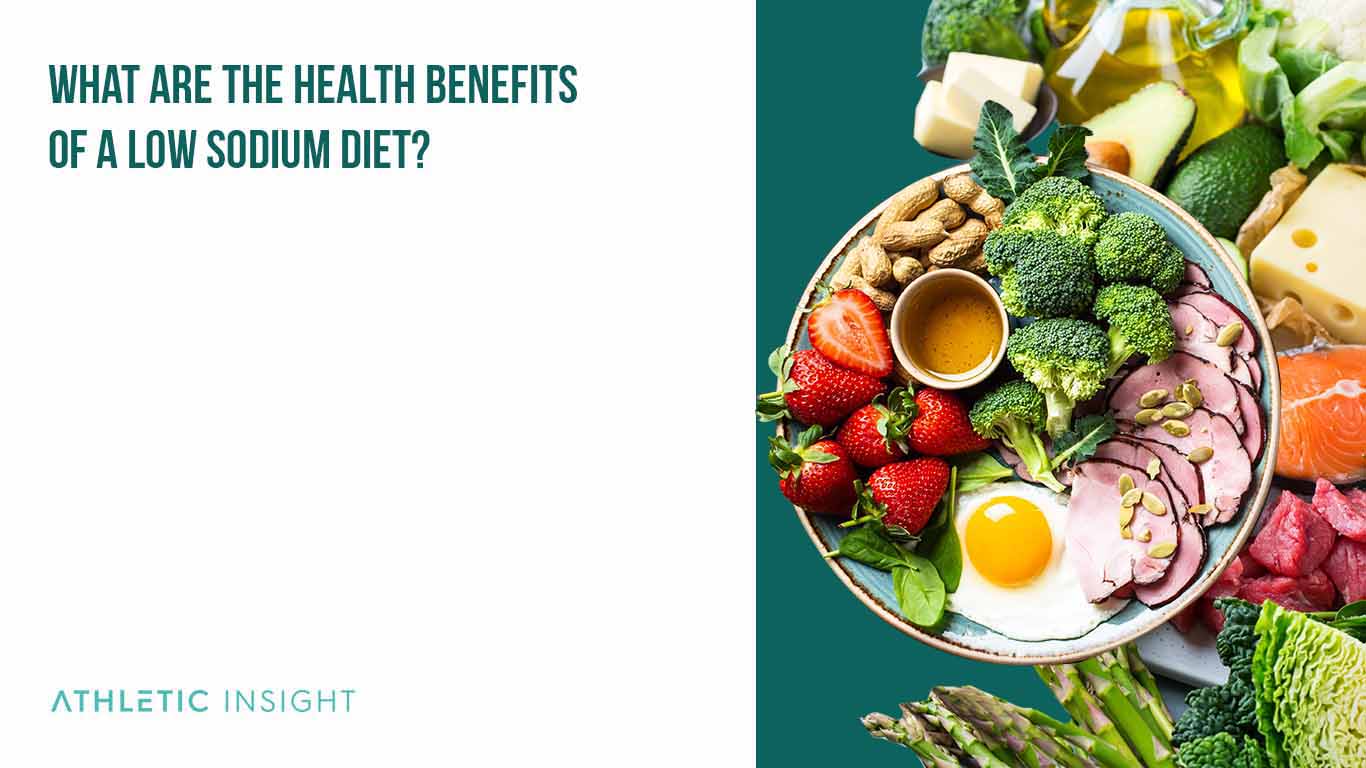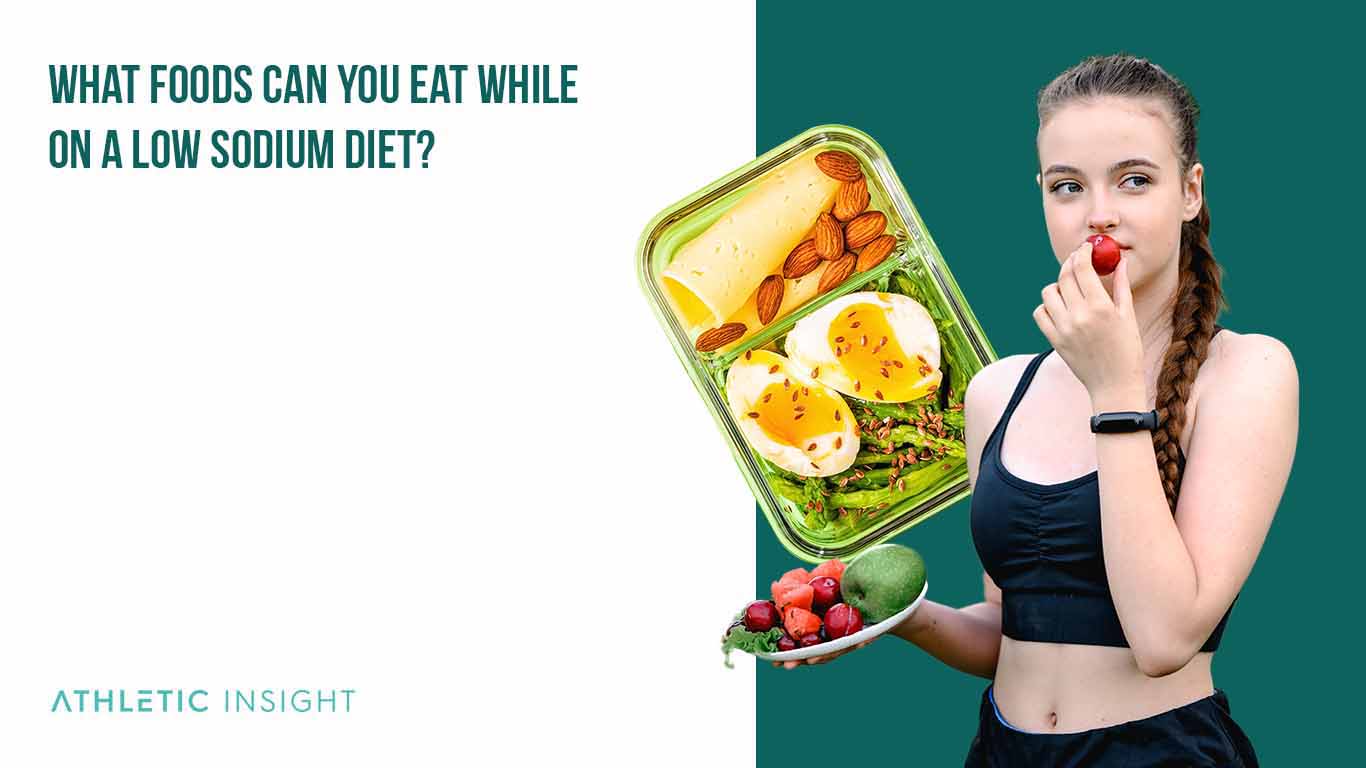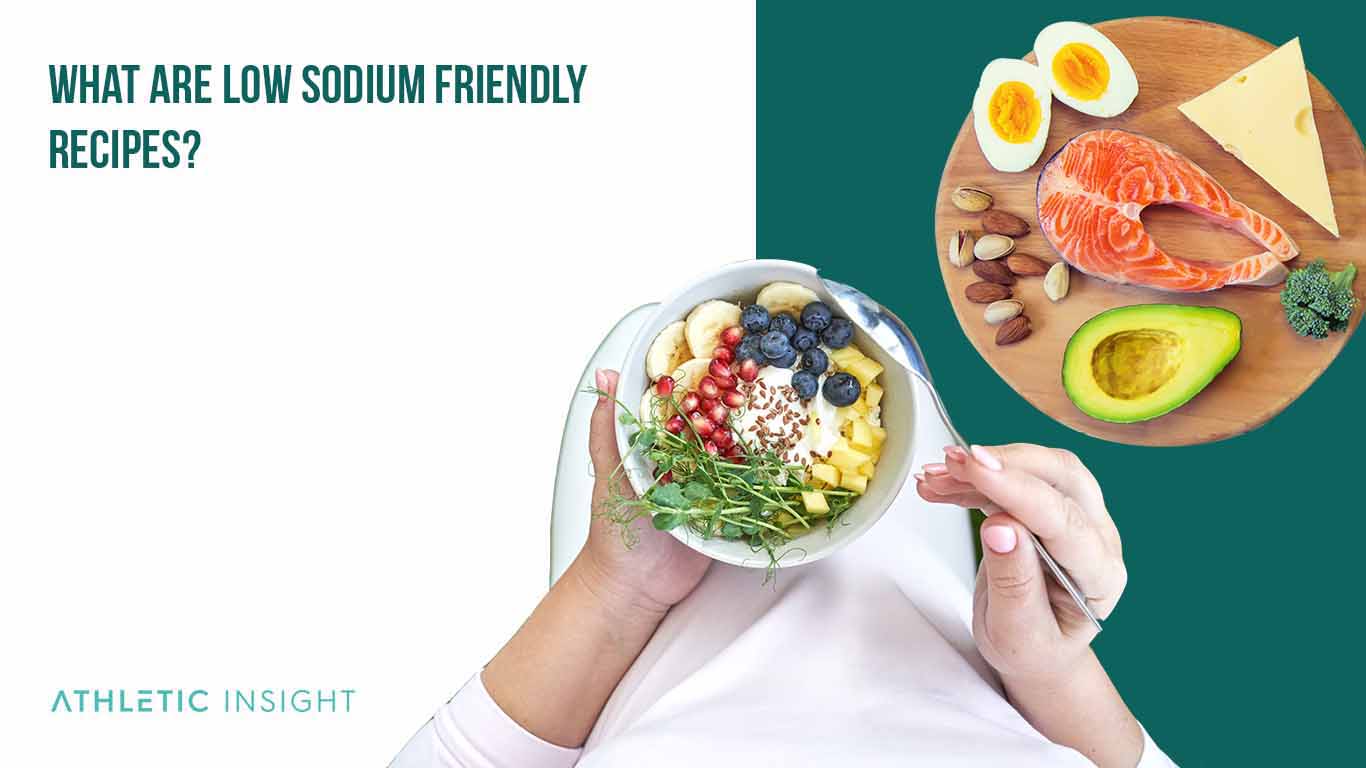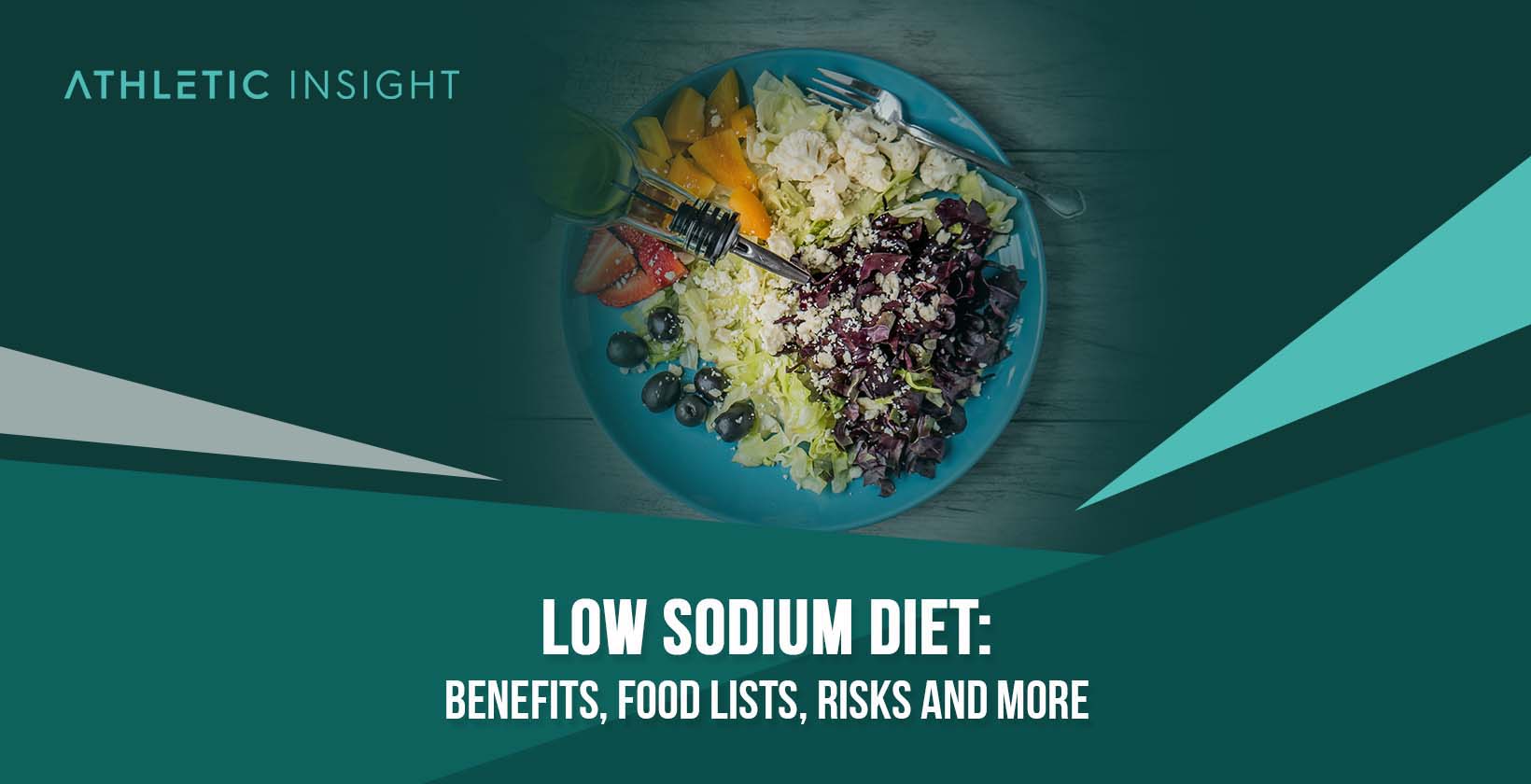If your healthcare provider has put you on a low sodium diet, you likely have many questions and thoughts going through your mind. Low sodium diets, also known as low-salt diets or sodium restricted diets, are among the most common diets prescribed to people by their doctors. Reducing sodium can help address several health issues and may be integral to managing and recovering from certain illnesses.
A low sodium diet is defined as a diet that seeks to limit daily sodium intake in foods, drinks, and medications. If you’ve been put on a low sodium diet or are thinking about reducing your sodium intake as a prevention measure, read on.
This article will look at the most common reasons for low sodium diets, the details on foods to choose and foods to avoid, how to handle eating out at restaurants, and more. A low sodium diet may seem daunting at first, but it is a manageable lifestyle change if you have the tools to understand it and make it work for you.
How does a Low Sodium diet work?
To understand how a low sodium diet works, you first have to know the role sodium plays in your body.
Sodium is a mineral that the human body needs to function correctly. Sodium helps the body perform some essential tasks. Its primary function is to regulate the body’s water and mineral levels. When the water-mineral balance is correct, the body’s systems can work in harmony without glitches. You need sodium to help your brain send messages to your body so that your muscles can function the way they should.
When you have too much sodium, the balance becomes disturbed, and you can have excessive fluid buildup in your body’s tissues. It causes an increase in the amount of blood your body has to pump. High blood pressure, swelling of extremities, and fluid buildup around the heart are all symptoms of excessive sodium.
What are the health benefits of a Low Sodium diet?
A low sodium diet can help reduce blood pressure and limit fluid buildup in the body. Many patients who are placed on a low sodium diet by their doctors see improvement in their condition in about one to two weeks.

The standard American diet is typically quite high in sodium, and people often consume much more sodium than is healthy on a daily basis. Some individuals choose to lower their dietary sodium as a preventive measure to avoid having problems with their health later in life. Making a conscious decision to reduce your dietary sodium and adopt a healthier lifestyle can help keep you healthy.
What are the health risks of a Low Sodium diet?
As mentioned earlier, bodies need sodium to function properly. If your body is deprived of the sodium it needs, you can face inevitable consequences. While high sodium diets can lead to health problems, diets too low in sodium can also have significant risks.
- Studies have shown that low sodium diets can worsen insulin resistance for some people. Insulin resistance means that your body doesn’t respond the way it should to the hormone insulin, which regulates blood sugar.
- Some studies suggest that a low sodium diet can increase LDL cholesterol levels. LDL is what is known as the “bad” cholesterol. It’s unclear why low sodium could cause LDL to go up, and more studies are needed.
- If your sodium levels are extremely low, you can be in danger of serious effects, including seizures and other uncontrollable body movements, headaches, and even coma and death.
It’s good to consult with your doctor before making any significant dietary changes. It would be best if you started a very low sodium diet only under the guidance of a healthcare provider who can weigh the risks against the benefits.
You can choose to reduce your dietary sodium yourself as part of a healthier diet as long as you keep your daily intake within normal healthy levels, around 2300 milligrams per day.
What are the guidelines for a Low Sodium Diet?
If you’re thinking about switching to a Low Sodium Diet, it can be difficult to remember all the things it entails. For that reason, we’ve created a simple guideline based on science to make the process easier for you.
- Eliminate salty foods from your diet and reduce the amount of salt
- Choose low sodium foods
- Read the label first before using salt substitute
- Be creative and season your foods
- Read ingredient labels to identify foods high in sodium
- Eat more home-cooked meals
- Don’t use softened water for cooking and drinking
- Avoid medications which contain sodium
1. Eliminate Sources of Excessive Salt
Sounds like a no-brainer, right? You’ll just stop using table salt! Reducing your use of table salt is definitely an excellent place to start, but it’s nowhere near the whole story. The majority of foods in grocery stores contain some amount of sodium, and when you’re counting grams each day, they can add up quickly!
In addition to eliminating extra table salt from your food, you’ll need to weed out foods that are already high in sodium. The first culprits are what you’d expect – ham, bacon, and other preserved meats, many prepackaged foods, chips, crackers, pickles, and olives. Try to find lower-sodium alternatives and use them sparingly.
You’ll also want to limit dairy products and baked goods, which can contain surprisingly high amounts of sodium. That’s not to say you can’t ever eat these foods; you’ll just want to eat them in moderation. The same is true of soups, dips, and other condiments.
2. Choose low sodium foods
There are foods that are naturally low in sodium. These should be the first choices for those trying to reduce their dietary sodium intake. Some low sodium foods are.
- Fresh vegetables and fruits.
- Plain oatmeal (not the ones in packets).
- Fresh meats and fish.
- Plain unflavored pasta from a box (dried spaghetti, ziti, etc.).
- Dried, unflavored beans and grains.
There’s a long list of low sodium foods. You can also look into healthier versions of your favorite foods, like low sodium cheese. While most hard cheeses are high in salt, many brands of Swiss cheese are low in sodium. There are also low sodium versions of many canned vegetables. Add these items to your shopping list and familiarize yourself with the stores that sell them.
3. Read the label first before using a salt substitute
Many people who go on a low sodium diet miss the taste of salt in their food, at least in the early days of following the diet. Salt brings out the flavor of food, and if you’re used to eating more significant amounts of salt, you may feel like your food is bland without it.
Salt substitutes are popular for those on a low sodium diet because they can enhance the flavor of your food in a similar way to salt. These substitutes can be helpful, but you should be cautious about using them in excess, especially if you have certain conditions.
Some salt substitutes contain high amounts of potassium. Potassium can lower blood pressure, which can be beneficial for those who are on a low sodium diet due to high blood pressure. However, for some individuals, high potassium can cause problems if you have kidney problems, heart disease, diabetes, and other conditions.
You should read the labels when shopping for a salt substitute and make sure it is safe for you to use. Saly substitutes that contain herbs and spices to give food flavor are a good choice if you don’t want to add potassium to your diet.
4. Be creative and season your foods
Going on a low sodium diet can help you get more creative with your cooking. Salt is a simple flavoring that can give some flavor to otherwise plain foods. When you have to lower your salt intake, you may want to experiment with other more complicated flavors.
It’s a good time to try new recipes and figure out what combinations go well together! Try cooking with more herbs and spices, maybe trying some you haven’t experienced before. You can also give your food more pizazz by adding tart flavors like citrus or vinegar.
5. Read ingredient labels to identify foods high in sodium
Food nutrition labels become an essential part of your life when you’re on any special diet. For a low sodium diet, you have to identify how much sodium each food has and “budget” your intake on a daily basis. You may be surprised to find out just how much sodium is in some common foods.
On most standard U.S. nutrition labels, the sodium content is found right in the middle, on the fifth row from the bottom. Sodium is measured in milligrams (mg).
On that same line, you’ll also find the percentage of the RDA (recommended daily allowance) of sodium in one serving of the product. Some food labels show you percentages for one serving AND the entire package, so you can compare.
The RDA for sodium is 2300 mg, so most nutrition label percentages are built on that number. If your doctor-prescribed sodium restricting diet calls for less than 2300mg, you will have to do some math to figure out how the numbers apply to you.
For example, if food has 600 mg of sodium per serving, around 26% of the RDA but 33 percent of your daily prescribed intake. That’s a significant difference.
You will also have to understand portioning. Most people don’t bother to read the serving size section of food nutrition labels, but you must understand this part of the label. It’s easy to eat a lot more than a serving size of food, especially when it’s something like cereal, chips, or crackers that are light and not very filling. Overdoing it can raise your sodium intake by a surprising amount.
The words “Low sodium” and “lower sodium” appear on some food packaging. These designations are useful for helping you make better choices, but keep in mind that “lower sodium” isn’t the same as “low sodium”; it just means that the product has less sodium than the original version. In some cases, for example, with bacon, this means that while the food isn’t as salty as the original product, it still has quite a bit of salt and should be used sparingly.
After a while, you’ll get used to reading labels, and you’ll commit to memory how much sodium is in certain foods. So you’ll know which ones to avoid and which to choose.
6. Eat more home-cooked meals
Fast food – and restaurant food in general – tends to be high in sodium. The same is true for many prepackaged meals you can purchase from the grocery store’s frozen section.
Doing more cooking at home is one of the best ways to adhere to a low sodium diet. You can choose to create your own meals out of low sodium foods, and by doing so, you’ll probably find that you’re eating a diet that is healthier overall.
There are many resources online for low-sodium recipes. You can also consider meal-prepping. Meal prepping is when you cook many meals at once, ahead of time, and freeze them so you can use them in the coming weeks. Meal prepping can make it easy for you to have a low-sodium meal at home or on the go, even when you’re busy.
7. Don’t use softened water for cooking and drinking
Water is often an overlooked source of extra dietary sodium. If you drink tap water and use a water softener, it can add to your daily salt intake. You may want to stop using a water softener or only soften your hot water and not the cold water. You could also switch to spring water or purified water with no extra sodium.
8. Avoid medications that contain sodium
Some medications contain sodium. If you have any concerns about your prescribed medications or about over-the-counter medications you’re considering using, speak with your healthcare provider. Your doctor will weigh the risks and benefits of the medicines prescribed to you and will switch any drugs that could be unsafe for you.
How to start a Low Sodium Diet
The best way to start a low sodium diet is as follows.
- Familiarize yourself with how to read nutrition labels.
- Go shopping. You will likely need to add a few new items to your pantry.
- Learn new cooking strategies.
- Enjoy some of your favorite foods occasionally and in moderation.
- Stick with your diet.
What foods can you eat while on a Low Sodium diet?
Fresh fruits and vegetables are your best friends on the low sodium diet Food List. You should also stock up on whole grains, dry beans, fresh, unprocessed meats, and some lower-sodium versions of your favorite foods, for example, low sodium cheese.

What foods should you avoid while on a Low Sodium diet?
While on a low sodium diet, you should consider avoiding processed foods, fast food, cured and salted meats, pickles, olives, soy sauce, and any flavoring mixes that contain sodium.
- Processed foods
- Fast food
- Cured and salted meats
- Pickles, olives, soy sauce, and flavoring mixes contain sodium or MSG
There are other foods that should be eaten with caution and in moderation. Some of those are mentioned earlier in the article.
What are the facts about Low Sodium Diet?
- A low sodium diet is relatively easy to follow once you know the facts.
- Your doctor may prescribe you a low sodium diet if your health condition warrants it.
- You can embark on a low sodium diet on your own but be careful to get enough sodium.
- 2300 mg is the recommended daily amount of sodium, but your doctor may recommend less or more.
- You can enjoy many foods while on a low sodium diet.
Is a Low Sodium diet considered a healthy diet?
Yes, a low sodium diet is considered a healthy diet. Cutting out excessive sodium can be one of the critical steps to take for a healthy diet and can be beneficial to you in the long run.
Many foods that are naturally low in sodium, like fresh fruits and vegetables, are also low in fat, calories, preservatives, and added sugars, making for an overall healthier daily diet.
Is a Low Sodium diet worth trying?
Yes, a low sodium diet is worth trying. Cutting excessive sodium is safe and effective and is worth trying to improve your health. In some instances, it could be vital for treating your medical conditions. Always follow the advice of your healthcare team regarding your treatment.
Is the Low Sodium diet expensive?
No, a low sodium diet is not expensive. Lower sodium foods are usually no more costly than other foods. In fact, you might end up saving money on your sodium-restricted diet.
Low sodium foods tend to be natural foods, like plain meat, beans, other proteins, fresh vegetables, fruits, and whole grains. These tend to be inexpensive and healthy. You don’t need to buy high-end food for your sodium-restricted diet. You may even save money because you’ll be buying fewer prepackaged foods and fast food.
Who should do a Low Sodium diet?
Any adult who chooses to lower their intake of excessive sodium, or anyone who a healthcare provider places on a low sodium diet.
What are Low Sodium Friendly Recipes?
There are many recipe options available for people trying to lower their sodium intake. A quick google search will yield a plethora of delicious and tempting recipes. Most of the foods you love to make can be modified to include less sodium. Here are just a few examples.

- Low Sodium Chicken Noodle Soup
- Low Sodium Spaghetti Sauce
- Baked Brie Envelopes
- Banana Nut Oatmeal Cups
How many calories can you consume when doing a Low Sodium diet?
A low sodium diet doesn’t restrict calories. You can eat your regular calorie intake while having low sodium foods. Many low-sodium foods also happen to be higher in fiber and lower in calories and fat, so some people may notice that they consume fewer calories on a sodium-restricted diet even if they aren’t trying to.
What is the initial reaction of the body to Low Sodium?
Generally, people put on a low sodium diet plan due to high blood pressure (the most common reason) see lower blood pressure within a couple of weeks. Similarly, those with swollen limbs due to fluid retention usually experience less swelling after a week or two of sodium restriction.
What is the proposed time frame for the Low Sodium diet?
Usually, a low sodium diet is meant to be followed as long as the person is prone to the condition it’s being used to treat. This often means sodium restriction is a lifetime practice.
If you have a medical condition, your doctor may put you on a very low sodium diet for a temporary period to help your body heal and then switch you back to a regular sodium-restricted diet for maintenance.
Why are Low-Sodium Diets prescribed?
Low sodium diets are prescribed for conditions like heart disease, heart failure, and high blood pressure, as well as other illnesses. A sodium-restricted diet could help reduce water retention, lower blood pressure and alleviate symptoms of heart disease.
What are some restaurant dining tips while on a Low Sodium Diet?
Dining out is one of the biggest challenges for people who are on any kind of special diet. It can often be impossible to know how much sodium is in a restaurant-prepared dish. When dining out, you can stick to your low sodium diet by following these simple tips.
- Avoid fast food and other chain restaurants. Most fast dining establishments use premade foods, and they have little control over the salt in their products.
- Read nutrition facts ahead of time. If you have to eat at a restaurant chain, check the sodium of their different offerings to find the safest choices.
- Request no salt. Ask that no salt be added to your food. This is the simplest way to manage a low sodium diet when dining out.
- Order wisely. Choose dishes with no breading, gravy, sauce, or cheese. If you want any of these, order them on the side and use them sparingly.
- Bring your own flavor. Get accustomed to carrying your own salt substitute, herbs/spices mix, or whatever low-sodium flavoring you prefer.
- Manage portions. If you’re eating at a place that has few low sodium entrees, consider eating less of your main dish and supplementing with salad or veggies.
What is the limit of sodium while on a Low Sodium Diet?
The FDA recommends no more than 2,300 milligrams of sodium daily. However, in some cases, your health care provider may recommend even less, for example, 1800 or even 1500 milligrams per day.
Do doctors recommend a Low Sodium Diet?
Yes, doctors recommend cutting excessive sodium from the diet to maintain good health. They also suggest a low sodium diet to address health problems in specific cases.



